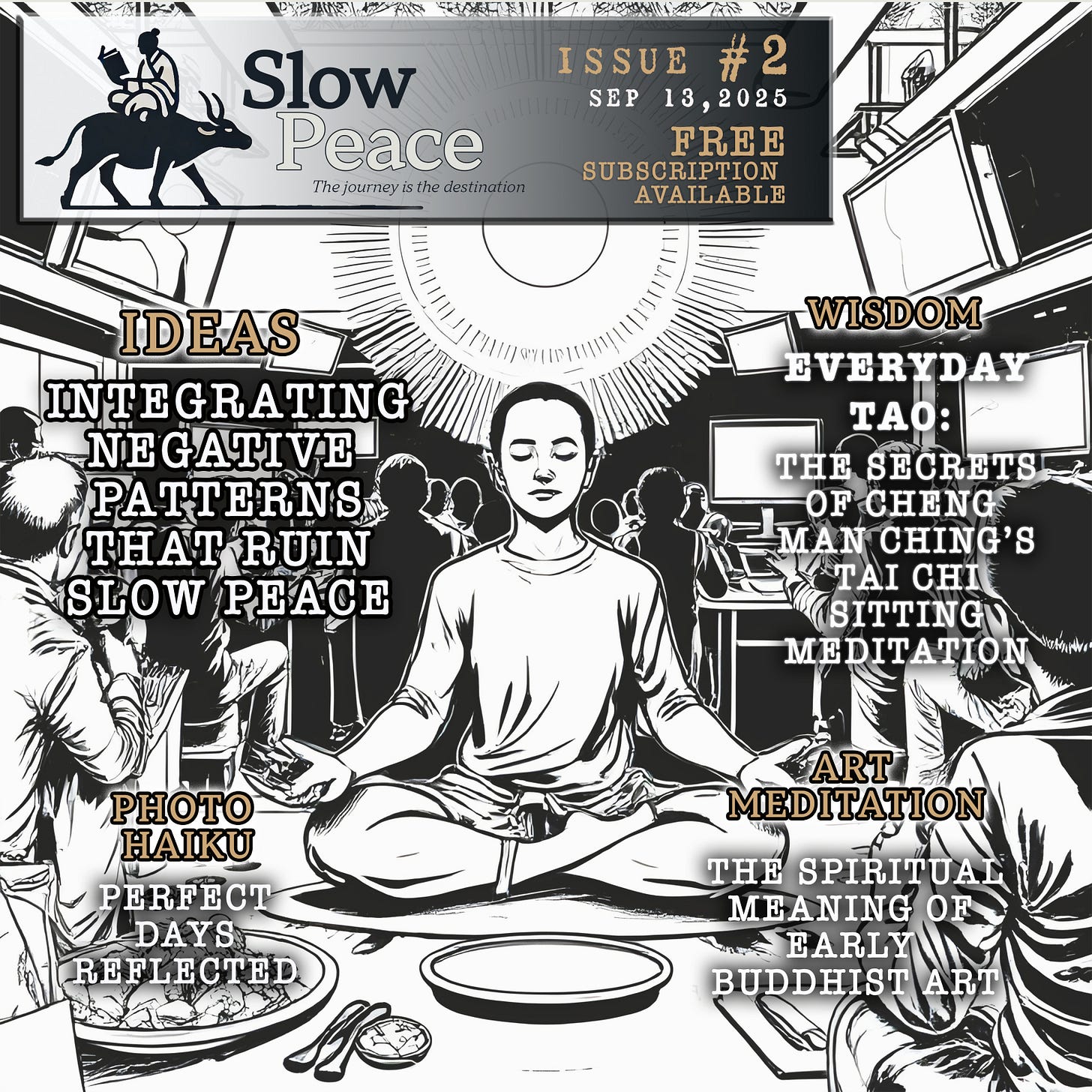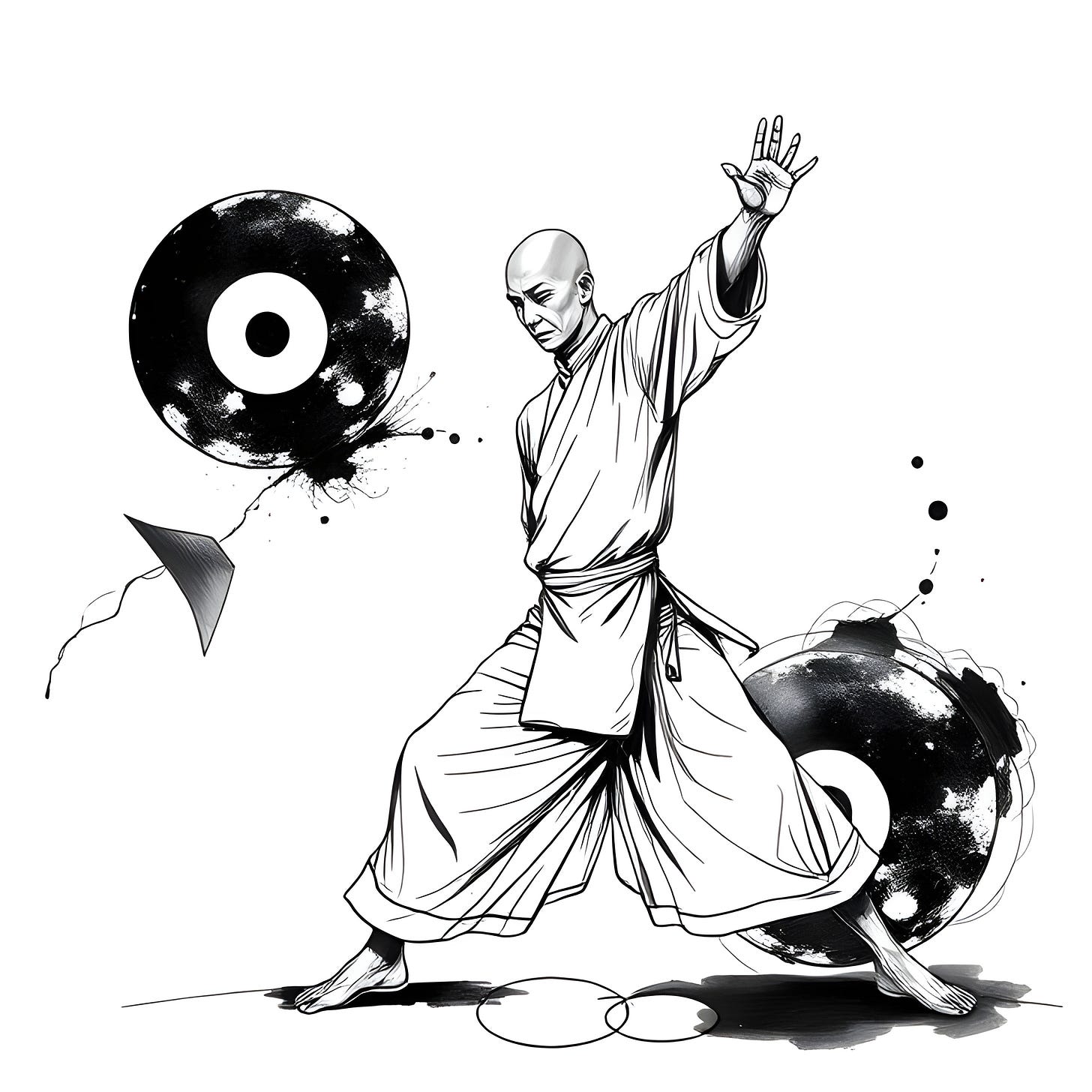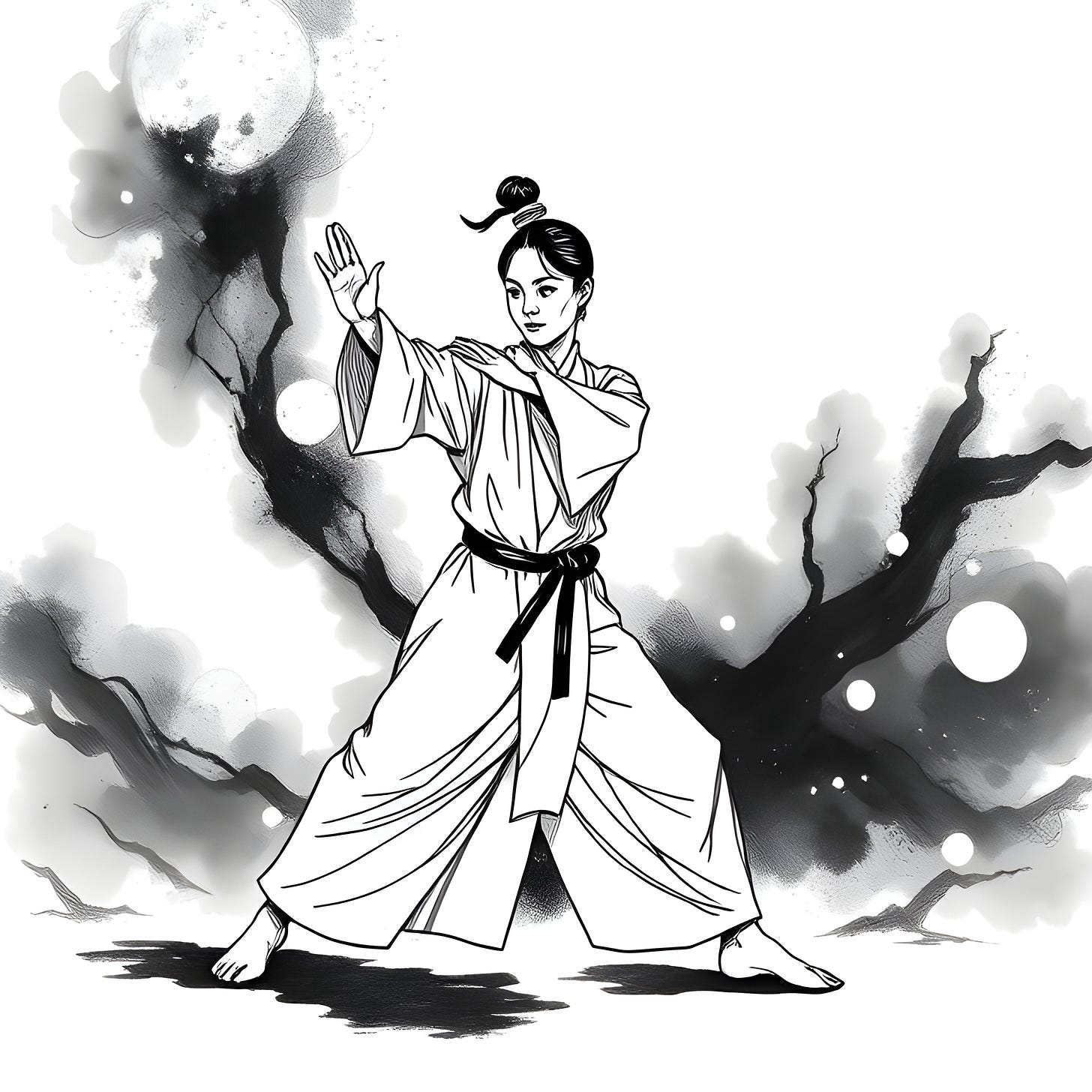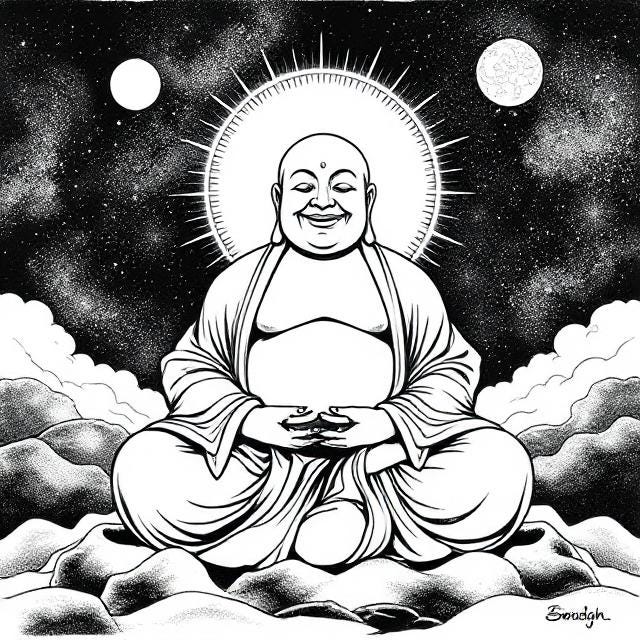Slow Peace Issue #02: Integrating Negative Patterns That Ruin Slow Peace
THE JOURNEY IS THE DESTINATION
Welcome to Slow Peace Issue #02. We can enthusiastically leap into meditation or a mind-body art like yoga or tai chi but often, when we do try to create a slow space with the intention of cultivating slow peace, negative patterns of fear and desire are stirred up and try to short-circuit our process. In this issue we’ll explore how to understand and integrate these patterns, learn the art of tai chi sitting meditation and ask what early Buddhist art has to offer us.
Slow Peace, the journey is the destination.
Note to subscribers: The previous issues of Beautifully Broken are available to all subscribers. For more information on Slow Peace and its central idea please read the About Page.
To new subscribers: Thank you for joining us on the universal journey to self-realization and enlightenment, I hope Slow Peace will help you on your way towards a long, slow, happy life.
To existing subscribers who joined from the Beautifully Broken newsletter: Thank you for your continued support, I hope you’re enjoying Slow Peace and the newsletter’s content.
IDEAS: Integrating Negative Patterns That Ruin Slow Peace
In the first issue we talked about the idea of creating slow space in order to bring about slow peace. I encouraged everyone to try sitting alone for ten minutes in stillness.
Here are the three outcomes you can experience when attempting to enter slow peace:
1.No result: I don’t feel any difference, I just sat there for ten minutes, what’s the point? I’m bored.
2.Good result: My mind was still, I entered slow space and found my mind and body refreshed by the experience. Why wouldn’t I do this every day?
3.Bad result: Many negative thoughts and feelings came to the surface and distracted me, I wish I’d never tried. In short, I suffered.
For the first two outcomes, the formula is to keep on with the practice, you’re on the right track.
Boredom can be the final stage before the mind gives up on distraction and finds stillness. Slow peace will soon be yours. Be confident.
Also, if you found slow peace instantly then keep it up. Like watering a plant each day to keep it alive, we all need the slow peace that comes from slow space.
The third outcome, where we are distracted, afflicted by suffering or craving, is common and the focus of this issue.
If it’s your first time entering a meditative space you may have found this simple, natural experience challenging. Many thoughts might have arisen to steal your peace. You may have already given up your slow peace practice.
Even with a distracted mind, if you did manage to sit for the prescribed time, I wager you’d have felt better afterwards. Often, when the body is still but the mind is active (external yin, internal yang), when we cease meditation and begin to move the body the mind becomes still and we can experience a momentary calm (external yang, internal yin). This should be seen as an encouragement to return to practice, not an indication that not meditating made you feel calm.
Here are some things that go through the minds of people whose go-to patterns seek to avoid meditative space:
It’s a beautiful time to meditate but I’ve got too many messages on my phone to respond to.
I’m going to do some creative writing or art today but suddenly I feel like having sex (for instance, famous French writer Georges Simenon).
(Georges Simenon did at times rent workspaces in seedy neighborhoods, including above or below brothels, and he was very open about his visits to prostitutes. Patrick Marnham’s biography The Man Who Wasn’t Maigret notes that Simenon had a writing office in the 18th arrondissement that was directly above a brothel he frequented. It gave him both the privacy to write and the atmosphere he craved.)
I want to fast and miss lunch today but for some reason I have a craving for a bucket of ice-cream.
I want to be more compassionate in my relationships but I get impatient and end up being angry.
I am disappointed in how others treat me and often feel depressed.
Other times, you can have a very positive meditative experience, finding yourself in slow space through tai chi, yoga, sitting meditation or a more complex physical activity like gardening, cooking, driving or fishing, but afterwards there can be a backlash where negative feelings or compulsions arise and we find ourselves at the mercy of what the Greeks referred to as harmatia - our fatal flaw.
From Ancient Greek ἁμαρτία (hamartía, “tragic failure, sinful nature”), from the verb ἁμαρτάνω (hamartánō, “to miss the mark”).
Here’s a short list of common fatal flaws, perhaps one will jump out at you.
Any of the following activities in excess: food, sex, money, drugs (including alcohol), shopping (buying expensive things that make us feel temporarily good), distraction (screens and social media), etc.
Any of the following characteristics in excess: stubbornness, disconnection from the world and others, neediness, anger, anxiety, fear, vanity, pride, etc.
We attempt to exist in slow space, to liberate ourselves from suffering and find peace but our particular unconscious counter-force arises and sucks us back into chaos.
These various fatal flaws can be grouped under what the Buddha refers to as the root causes of suffering: fear and desire.
“There is no fear for one whose mind is not filled with desires.” The Buddha, Dhammapada, verse 39
If you feel, on a fundamental level, that you don’t deserve peace then this will cause suffering to arise and you will escape into a harmatia, a numbing negative pattern that will give you a sense of temporary relief but ultimately deny us what is natural and essentially simple - peace and stillness.
We’re so disconnected from nature that often our pet cat or dog can be our closest connection to the animal existence that should be the foundation for our perception of the world.
Think about how much time your pet cat or dog can just sit in place and exist. If you don’t have a cat or dog then trying sitting still in once place and observing birds, they’re not always as active as you might think.
It’s normal for animals, humans included, to sit in meditative, relaxed stillness for part of the day but with the amount of resources modern culture has invested into distracting us, we can barely manage ten minutes!
So, what are some strategies we can implement to help break negative, repetitive patterns of fear and desire that threaten to derail our natural birthright as beings that deserve to exist in peace?
Eliminate external inputs of fear and desire. If you are surrounded by advertising, exposed to social media, bombarded by entertainment content, surround by people heavily invested in material possessions, or especially in situations where you are likely to fall into your fatal flaw then you need to minimise these negative inputs. This will help you succeed in your quiet sitting in place by taking some energy out of the negative pattern.

Some negative patterns run deep and go back to our childhood (or our ancestral past). They are coping mechanisms for the human mind to deal with the overwhelming nature of material existence.
The conscious mind, the ego construct that we relate to as “I” is the smallest and most fragile part of our consciousness.
This unconscious force, where negative patterns are lodged, is much more powerful, like the iceberg, whose mass is mostly hidden below the water. It is aligned to animal sense of survival and doesn’t care if you indulge in negative, self-destructive patterns, as long as they have served to insulate you in the past and keep you alive in the short term.
The first stage of overcoming these patterns is to not try and overcome them with force. The conscious mind trying to order about the subconscious is like trying to push an iceberg with a row boat. A waste of time and energy. The best bet is to acknowledge the pattern and attempt to integrate it. To do this we need to enter into slow space and sit until we are totally relaxed. Then the superconsciousness will have the space to arise—the perspective that helps us see ourselves at a distance.
Once you are in slow space we can activate the superconsciousness by acknowledging the pattern. The mind becomes an observer, not a participant. It can see the negative pattern even if it can’t prevent it (see the ox herding pictures in the previous issue).
Once you are conscious and observant of the pattern, you can slowly begin to integrate it.
Zen koan-style thinking can be useful:
I want to eat, but who is it that wants to eat?
I want to touch my phone, but who is the “I” that wants to touch my phone?
What is the source of this impulse?
What does this impulse that comes over me look like? Sound like?
Why am I attracted to suffering?
Let the pattern rest like an old pet. Comfort it and let the distraction, the fear or desire, pass. At this stage we can begin to let the pattern disintegrate. It has outlived its usefulness.
The title of this newsletter is Slow Peace so don’t be in a hurry for fast results. Entering into slow peace, unencumbered by suffering can take one ten minute session or a lifetime depending on how deep the negative patterns in your life run and how often you are able to sit and do the work until the muddy waters settle.
Don’t be frightened or distracted, keep reminding yourself that slow peace is your birthright. We all deserve to sit, unperturbed for a period each day and exist in place. Why should a dog or cat have more right to peace than a human?
The sooner we reconnect to slow peace, the sooner we align our lives and the world around us to the energy of peace and stillness.
WISDOM: Everyday Tao Part 2: Professor Cheng Man Ching’s Tai Chi Taoist Sitting Meditation For Cultivating Energy
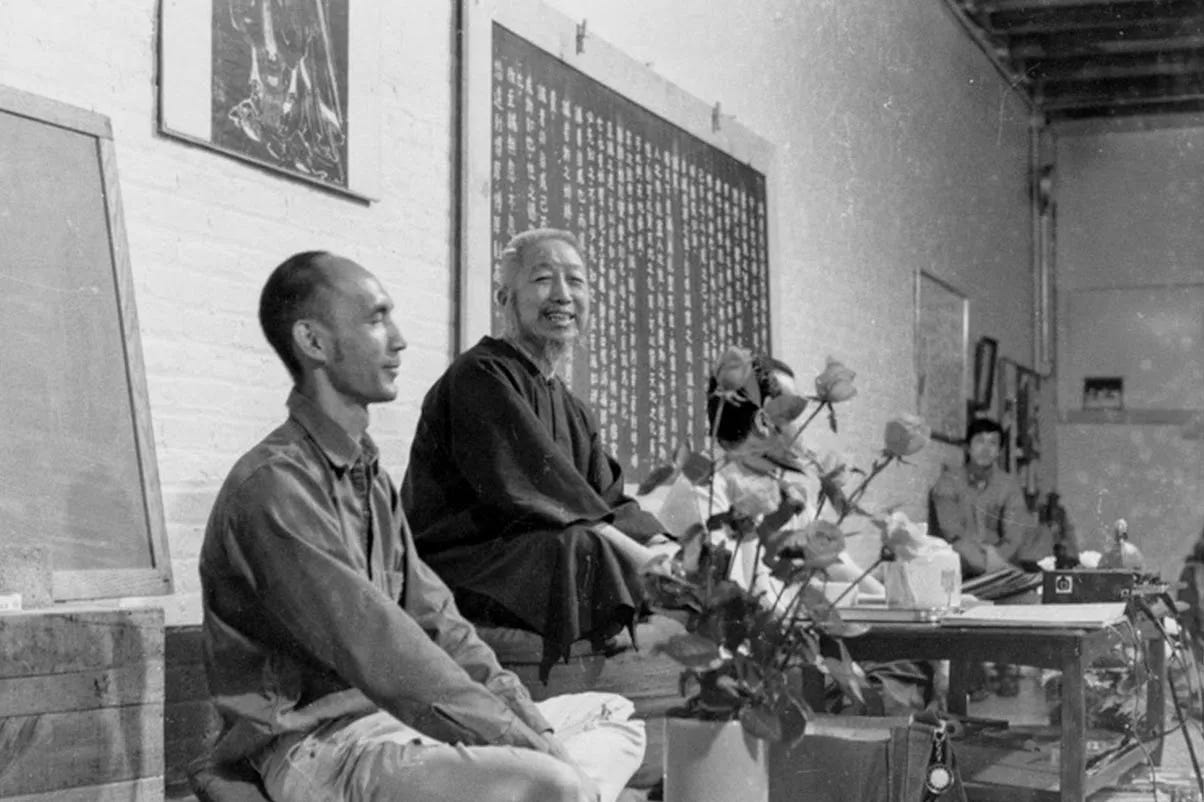
Following on from Issue 1, where we outlined the four sayings of Tai Chi for Everyday Living and went in-depth on the topic of tai chi walking, we’ll now move on to look at tai chi sitting and how it can enhance slow peace and every aspect of mind/body practice.
Professor Cheng’s formula saying for tai chi sitting practice is: Sit like the Laughing Buddha looking out upon the universe. 坐對人間笑彌勒
Sit like the Laughing Buddha looking out upon the universe. 坐對人間笑彌勒
Maitreya, the laughing Buddha, was known in China from the 3rd century. There he found a historical incarnation, a common phenomenon in the Chinese religious context, which helped to give him a physical appearance and a role other than those that Buddhism had hitherto attributed to him.
Under the dynasty Liang there lived a wandering monk Chan, religious name Qici (契此, qìc valence), originally from Mingzhou Prefecture in the Zhejiang. Carrying everything he needed in a canvas bag, he was distinguished by his corpulence and a zany and unpredictable but benevolent behavior; he was also credited with exceptional clairvoyant gifts. He is said to have died in meditation at Yuelin Temple (岳林寺 / 嶽林寺, yuelín sì), in his province of origin, in 916, pronouncing these words: "This Maitreya is the true Maitreya, he is present in billions of forms; he shows himself constantly, but no one recognizes him." A legend made him the incarnation of Maitreya: it was claimed to have seen him after his death, pious images representing him began to circulate.
The pot-bellied and smiling monk has become the most common and popular depiction of Maitreya in China where he is generally called Milefo (弥勒佛 / 彌勒佛, mílèfó, "buddha Mile (arousing the filling)", Budai (chinese : 布袋 ; pinyin : budai ; litt. "canvas bag") or also nicknamed Luohan (罗汉, luóhàn, " Arhat "), because he would have reached this stage. The more formal name Mile pusa (弥勒菩萨 / 彌勒菩薩, mílè púsà, "bodhisattva Mile (arousing filling)". His full stomach and his smile are a guarantee of happiness and prosperity, as is his bag which is claimed to be inexhaustible. These characteristics did not make a favorable impression on French travelers XIXe century, who only found in Milefo a fat man with an unprepossessing physique. The monk Qici became Hotei in Japan (translation from Chinese Bùdài 布袋 "canvas bag"), one of the Seven gods of happiness. In the traditional Chinese religion, Milefo is one of the Gods of fortune.
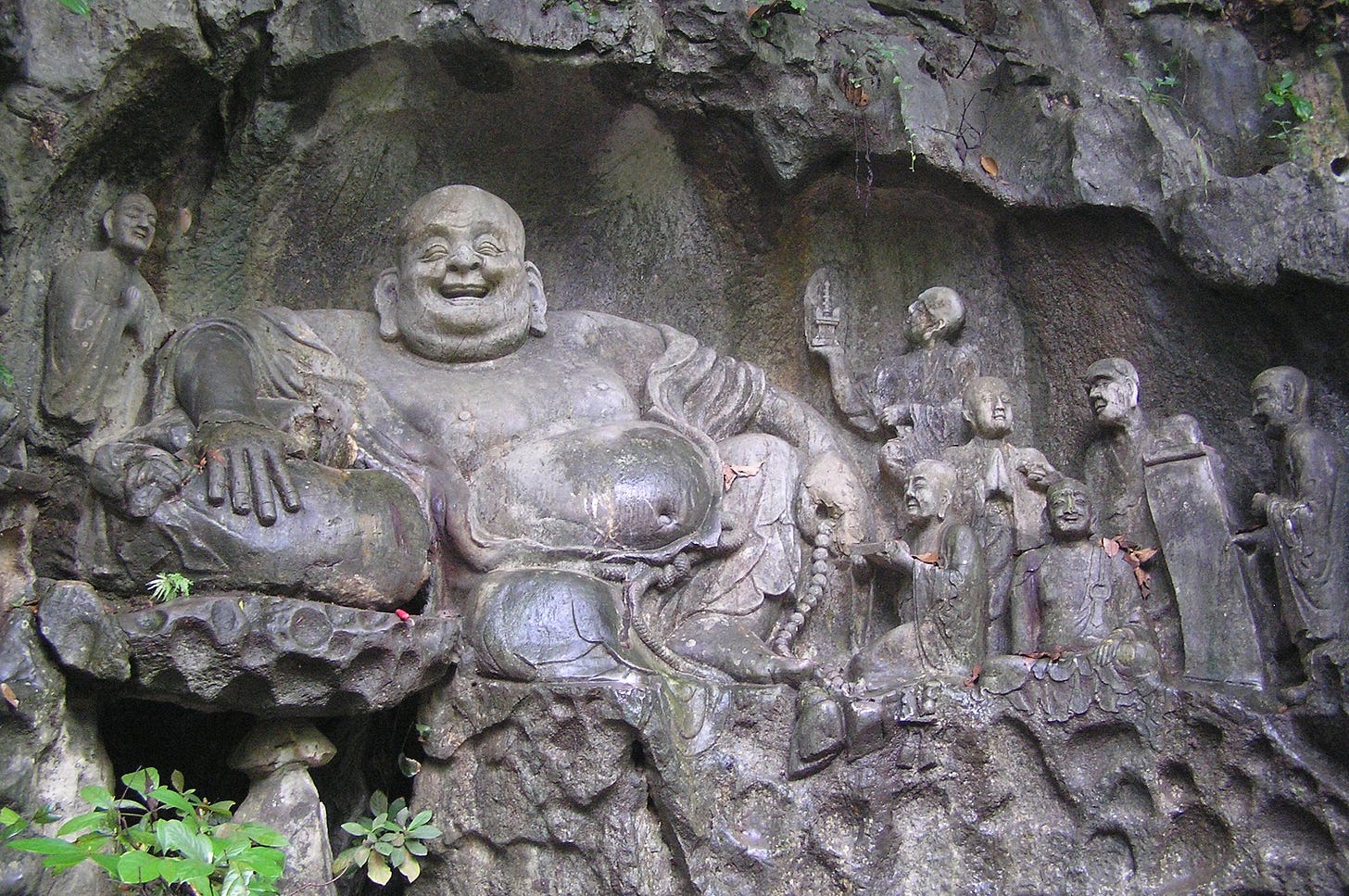
Here is the method of Sitting Like The Laughing Buddha (Milefo), with both the basic and the more advanced version which incorporates Professor Cheng’s “inner door” Taoist method for gathering chi in the body.

